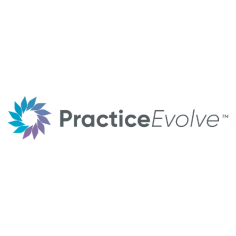Industry view from Linetime: Workflow wizardry
This article was also featured as an industry view in the May 2016 issue of LPM. To read the issue in full, download LPM.
Intense competition triggered by ABSs, generational attitudes, client needs and managing risk are all significant drivers of automation. Phil Snee, Linetime’s development director, says dealing with these drivers is a journey, and that all legal services providers can benefit in their own way.
The ABS ‘threat’ won’t go away – far from it, he says. There will be a move away from traditional hands-on law as firms change. “Automation is certainly a pathway to competitive advantage for mid-sized firms. While there is a fierce fight for work in the middle of a congested competition pyramid, it’s also these firms that are ideally placed to seize the opportunity, should they choose.”
Competition also dictates a fast response to change and opportunity, which is why Snee says Linetime delivers IT that gives users the ability to set up and edit workflows themselves – handing agility to the people at the coalface – and systems that help management to analyse process efficiencies and the profit and loss of each area of the business. The result is agile decision making based on management information, not guesswork. “It’s then about reviewing your automation and systems constantly, making sure they are always delivering what’s relevant today.”
Industry catch-up
The legal sector has some unique traits but that doesn’t protect it from external change and technology disruption, as Snee observes. Legal is special, “but not that special” and it should learn from other industries that use the concepts of process automation and continuous improvement.
Automation should involve innovating around clientfacing processes, but Snee is keen to point out that this doesn’t mean just online case progress access. “I see automation as a journey. Next, it’s likely to enable a move towards 24/7 client service and interaction.” Firms might automate CRM and outbound marketing, but that automation could soon go one step further and involve customer-facing software ‘robots’.
“You may need the ability to respond without human intervention, maybe where time difference is an issue. Software robots connect, gather information and carry out work overnight. The instruction is complete without any human intervention. Process standards are followed, data is protected, there’s an audit trail and modern availability for the client.”
Digital processes also make sense, not least because many clients prefer to avoid a visit to their lawyers. Law firms should be able to design a multitude of online client-facing forms for themselves, for anything from collecting property information and claim details, to marketing, customer satisfaction and training.
Firms with more fully integrated IT systems, like Liberate for example, can also better interact with third party automated processes. “Land Registry and the Ministry of Justice, for example, both have many highly automated processes – which will only grow in number,” says Snee.
On the client side, today’s buyers of legal services, both corporate and private, have grown up with the internet, high availability and a high level of automation in almost everything they do. Firms must service these new clients in the way they demand and still make a profit. Snee cites automated client communications as a prime example, with SMS often the preferred method of contact.
Commercial clients want push notifications on KPIs, alerts and summaries. Modern workflows can do that. “A multi-purpose engine can trigger workflow for all kinds of activity, including intelligent documents and fee quotes – keeping up with modern expectations.”
The good news is that embracing this kind of approach to automation will in turn deliver more business. “It creates better client service and automation efficiencies but also a valuable new dialogue with the client, that can help with winning other work.” Plus, the new breed of lawyers thinks this way, too. “New talent demands that systems are in place because they have awareness and imagination of what’s possible.”
Automation rainbow
The need to innovate to compete is coupled with risk management, auditing and control requirements. “Automation is fundamental to the effective work of the COLPs and COFAs,” says Snee. “It can free these highly experienced, valuable people to focus on higher-order work.”
He’s often told that having Liberate in a firm, because of its automated workflows and risk management, is a plus during compliance visits. “Conflicts are picked up, compliance is delivered, complaints management is automated and there is true adherence to Lexcel. Risk is reduced and time is saved.”
Snee sees automation as a “rainbow” from which firms should pick and choose their colours. The trick? Understanding where, how and what you should and should not automate. “The conversation ‘no case is the same, and my kind of work can’t be automated’ is a common one in law firms. But I contend that plenty of processes have to be standard for compliance, so are ideal for automation.”
Automation can deliver value for both commoditised (or high-volume) and complex (or bespoke) legal work, he says. “Lawyers just need to shake off their fears around automation and understand that they can use technology to augment their work, all kinds of work. It’s not about having workflow everywhere – just where it’s needed. We think workflow design should be done by the people who do the work, because they know best how it will save time and gain them efficiencies.”
Firms miss the point if automation is seen as dumbing down – they need to assess what will best improve client service and free fee earners from inefficient process.
“Make sure you know what parts of the automation rainbow will deliver innovation, efficiencies and reduce risk – it will help your firm embrace change, seize new opportunities and compete.”



